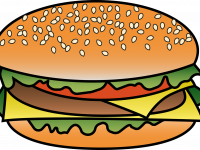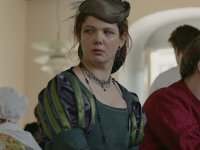This article is going to discuss a workshop tool: the use of short in-character larped scenes. These are scenes involving larp participants, in which they play their character. They take place during the pre-larp workshop, as a structured activity designed-in by the organizers, before the actual larp has started. They are being referred to here as ‘preparatory scenes’.
What are preparatory scenes like?
- A small number of characters are in the scene, often just two.
- A scene usually lasts for maybe five or ten minutes.
- Each participant might play just one such scene, or a series of them.
- (If a series of scenes, then those might be with the same other participant(s), or with a mix of different people.)
- The other participants might be watching, or they might be involved in scenes of their own, in parallel.
- Usually these scenes don’t involve the scenography, and other immersive material, that will be used during the larp itself: maybe not even costume.
- Usually they will happen towards the end of the workshop, so that their factual and emotional content is fresh in the minds of the participants as they start the larp.
Note, this is considered as separate from ‘preplay’ – which is in-character activity that participants undertake together without direct supervision from organizers, usually according to their own preferred structure or in an open-ended way, often quite some time before the larp. While preplay may have some of the same purposes and effects as preparatory scenes, it’s not being covered here: Kyhn[1]Mia Kyhn, “Preplay,” What Do We Do When We Play? (2020). has a discussion.
What types of preparatory scenes can be used?
- Backstory – participants can play out part of their characters’ shared backstory together. Perhaps a key point, such as ‘our first date’, or ‘the time A saved B’s life’ – to establish exactly what happened, and who said what to who.[2]For example, at On Location, character relationships are outlined in their briefings in terms of events from the past. During the workshop, the players will play through these scenes, to find out and agree together what exactly happened.
- Relationship – participants can establish the details of how their characters are when with each other – this can be illustrative, such as ‘this is how we spend a typical day/meal/mission/murder together’.[3]At Just a Little Lovin’, the in-character ‘social groups’ eat a meal together, during the workshop. This helps them explore how they relate to each other as a group during a regular day-to-day activity. Or it might be exploratory: the characters meet in a cafe – what might they start chatting about?
- Group dynamics – how does a group of linked characters function together? What are their dynamics of communication, of sharing space, of hierarchy, etc?[4]At De la Bête, characters live together in social groups of mixed status. During the workshop each group of participants designed and played out, with the other participants as audience, an extended scene that showed the group’s internal hierarchy and social dynamics.
- Reaction – how do the characters react (individually, and together) when placed into a particular situation? For example: if the two characters were seated together in a bus that came under gunfire, what would they say/do? When one of them finds a letter that the other has received from an ex-lover, what might happen? (This would usually be an imaginary episode; not drawn from their actual backstory – because its purpose is to explore ‘what if?’.)
And they could be:
- Emotional – intended to get into the insides of the relationship: how these characters feel about each other, and how those feelings are expressed. [5]At Dawnstone, participants were encouraged to together identify and play out a backstory scene that explored or established a key emotional dynamic between them: that set the tone for how they would relate to each other emotionally during the larp.
- Physical – getting the feeling of interactions within the relationship into the participants’ bodies. How do the characters use touch, distance, height, movement?
- Factual – making sure that the characters’ memories of the details of the event being depicted match each other.
- Different ways of doing things – trying out a scene a few times in succession, with variations in content or expression – or varying the character portrayal from one part of the scene to the next.
What’s the point of this?
Calibration! Preparatory scenes are a great tool for developing a shared understanding among participants. Nielsen[6]Martin Nielsen. “Culture Calibration.” In Pre-Larp Workshops (2014). explains why calibration is such an important task prior to larping together. And this can be a very effective way to help achieve it.
Calibration via preparatory scenes can be particularly valuable when participants themselves have had some responsibility for character (and even, world) creation.[7]In Brudpris, during the workshop the players determine the details of the culture that their characters inhabit, around a skeleton design: its rituals, behaviours, and the key ways in which families interact. It’s then valuable to play through some of these in pre-larp scenes They can show each other what they have created/added; and they can explore together what they have jointly decided.
What might participants get from it?
- The chance to try out different ways of playing their character, before having to commit to it in the actual larp.
- The chance to agree key details of backstory with the other participants who are involved.
- Feeling the backstory as lived, rather than just as text that they’ve read.
- The chance to explore relationship dynamics, and tweak them if necessary, in collaboration with the players of the counterpart characters.
- (Potentially, the chance to discuss with those people how the relationship might evolve, and what might happen between the two characters, during the larp – if the larp design permits this, and time hasn’t been allocated for it elsewhere in the workshop.)
- The chance to develop trust and shared understanding with fellow-participants – particularly important with those with whom they’ll be playing closely.
- A step towards emotional safety – from having had a ‘dry run’ of the relationship, and having set and tested boundaries.
What might organizers get from it?
- Participants on the same page – ensuring that they have covered the key things that are needed to be covered.
- Participants sharing in creation of material – giving them the chance to bring their own creativity to the larp preparations as well as the larp itself, even when the characters are fully predesigned.
- Participants energized – larping a scene is the best way of preparing minds and bodies for larping a larp. If preparatory scenes take place shortly before the start of the larp proper, they can help participants hit the ground running. (This is good for the participants themselves, too, of course.)
- Participants feeling safer and more able to trust – because they have been able to explore their behaviour together in a much lower-pressure and lower-stakes framework than within the larp itself.
There might also be other reasons or functions to use preparatory scenes. For instance, some participants might value having a ‘lived experience’ of the backstory, rather than it just being written in the character sheet. Or they might find that it helps them to physically embed memories as though they were their characters’. These psychological angles are beyond the scope of this article, but might repay some study.
How are they organized?
Organizers may just leave a time window for participants to decide and run their own preparatory scenes, but more usually there will be some sort of plan. Most efficiently, this will be a rota arrangement, telling each participant with whom they are to play a scene, when, and also where to do it (to save time trying to find an empty room/corner while everyone else is doing so too). The idea will generally be to play at least one scene with each of your character’s most important relationships: what kind of scene will depend upon the details of the backstory and of the connection that they have together. The Spanish organization Not Only Larp call this ‘speed-larping’, by analogy with speed-dating. One of their larps that used it is No Middle Ground.
A participant’s schedule might look something like this:
Timeslot 1: with character A, in location X, play out the scene when you first met and became friends.
Timeslot 2: with characters B and C, in location Y, play out your drinks together last night that decided you to join this mission.
Timeslot 3: take a break.
Timeslot 4: with character D, in location Y, play a typical family holiday from your childhood together.
Timeslot 5: with characters A and D, and player Q acting as an NPC, play the scene of your parent dying in hospital.
… with more details given for what’s expected to happen in each scene, as required.
(Breaks are sometimes needed if it’s not possible to occupy everyone in every timeslot, because of some scenes involving different numbers of people.)
The transitions between timeslots will usually be signalled by ringing a bell, or something like that. That tells everyone to end the current scene, and move to the location where their next one will be happening.
One approach used in Harem Son Saat was to use preparatory scenes as a transition into play: as the very last phase of the pre-larp workshop. It started with one-on-one and small-group scenes (from backstory), then progressed into three large groups segregated by gender (this segregation was an important aspect of play in the larp) containing the whole set of participants – and then the larp itself started. The larp designer, Muriel Algayres,[8]Muriel Algayres. Personal communication with the author. (2020). explains that the intention is to progress throughout the workshops to being more and more in-character, and then to move from in-character scenes directly into play so as to have the participants as ‘warm’ as possible.
Of course, for this to work, everyone had to already be in costume, and the usual final-briefing notes had to have already been given. It won’t be appropriate for all larps, or for all participant groups. But it was effective at supporting Harem Son Saat’s theme of a community whose present is overshadowed by its history (open and secret) and by its customs and patterns of behaviour.
So where does the magic part come in?
Think of the traditional ‘magic circle’ model of play.[9]Katie Salen and Eric Zimmerman, Rules of Play: Game Design Fundamentals. (2004). In this model, preparation for the larp and other para-larp[10]‘Para-larp’ is that activity around the larp that is not the larp itself. See Johanna Koljonen, ‘Designing Your Thing, Their Experience and Our Culture’ (2016). activities take place outside the circle: then at the start of the larp, participants cross into the circle, and start play under the different rules of reality, etc, that apply there.
Preparatory scenes are a way of bringing some of the magic out of the circle, into the pre-larp. They allow calibration activities to take place in-character, with all the benefits for remembering and feeling that can bring. They allow participants to try out ways of relating their characters to one another, without the commitment to consistency that will be required in-play.
By using preparatory scenes, you can make the magic of larp fresher, stronger, and just all-round generally magicker.
References
Algayres, Muriel. Personal communication with the author. 2020.
Koljonen, Johanna. “Designing your thing, their experience and our culture.” Nordic Larp Talks 2016, Oslo. YouTube, https://youtu.be/yKZAeVAVfoE?t=422
Kyhn, Mia. “Preplay.” In What Do We Do When We Play?, edited by Eleanor Saitta, Johanna Koljonen, Jukka Särkijärvi, Anne Serup Grove, Pauliina Männistö, and Mia Makkonen. Helsinki: Solmukohta, 2020. https://nordiclarp.org/2020/12/24/preplay/
Nielsen, Martin. “Culture Calibration in Pre-larp Workshops“. Nordiclarp.org, 2014. https://nordiclarp.org/2014/04/23/culture-calibration-in-pre-larp-workshops/
Salen, Katie, and Eric Zimmerman. Rules of Play: Game Design Fundamentals. Cambridge, MA: The MIT Press, 2004.
Cover photo: Image by Natalia Y on Pixabay. Photo has been cropped.
This article is published in the companion book Book of Magic: Vibrant Fragments of Larp Practices and is published here with permission. Please cite this text as:
Holkar, Mo. “Larping Before the Larp: The Magic of Preparatory Scenes.” In Book of Magic: Vibrant Fragments of Larp Practices, edited by Kari Kvittingen Djukastein, Marcus Irgens, Nadja Lipsyc, and Lars Kristian Løveng Sunde. Oslo, Norway: Knutepunkt, 2021.
References
| ↑1 | Mia Kyhn, “Preplay,” What Do We Do When We Play? (2020). |
|---|---|
| ↑2 | For example, at On Location, character relationships are outlined in their briefings in terms of events from the past. During the workshop, the players will play through these scenes, to find out and agree together what exactly happened. |
| ↑3 | At Just a Little Lovin’, the in-character ‘social groups’ eat a meal together, during the workshop. This helps them explore how they relate to each other as a group during a regular day-to-day activity. |
| ↑4 | At De la Bête, characters live together in social groups of mixed status. During the workshop each group of participants designed and played out, with the other participants as audience, an extended scene that showed the group’s internal hierarchy and social dynamics. |
| ↑5 | At Dawnstone, participants were encouraged to together identify and play out a backstory scene that explored or established a key emotional dynamic between them: that set the tone for how they would relate to each other emotionally during the larp. |
| ↑6 | Martin Nielsen. “Culture Calibration.” In Pre-Larp Workshops (2014). |
| ↑7 | In Brudpris, during the workshop the players determine the details of the culture that their characters inhabit, around a skeleton design: its rituals, behaviours, and the key ways in which families interact. It’s then valuable to play through some of these in pre-larp scenes |
| ↑8 | Muriel Algayres. Personal communication with the author. (2020). |
| ↑9 | Katie Salen and Eric Zimmerman, Rules of Play: Game Design Fundamentals. (2004). |
| ↑10 | ‘Para-larp’ is that activity around the larp that is not the larp itself. See Johanna Koljonen, ‘Designing Your Thing, Their Experience and Our Culture’ (2016). |






